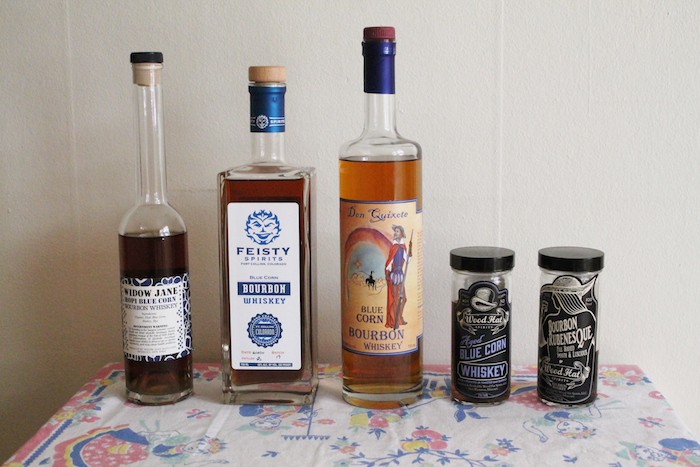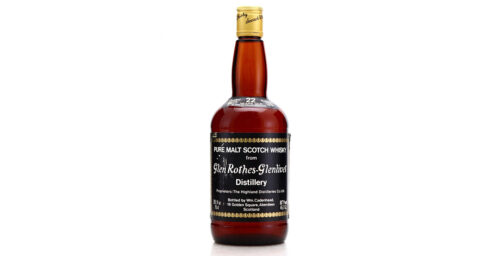One of the biggest misconceptions about American whiskey is that bourbon must hail from Kentucky. That’s not the case. While the Bluegrass State is indeed home to the big boys of bourbon and much of that particular whiskey’s heritage, along with an overwhelming majority of its production, today there’s bourbon popping up from sea to shining sea. From New York to Chicago, Washington and Wyoming to Texas, and assuredly, most everywhere in between, there’s an increasingly rich and diverse selection of whiskies that are not Kentucky bourbon to be found, only adding to the bounties of America the Beautiful.
To get a better understanding of what many of these produces are doing, first, come to terms with the fact that craft distillers competing in any whiskey category have it tough. It’s especially difficult to compete against the economies of scale and massive production capacities, along with the built-up consumer demand, of big name bourbon. The appeal of a local product or supporting a small business only goes so far if the whiskey itself isn’t worthwhile, or conversely, if it’s good but is lopsidedly more expensive than a big name counterpart.
That’s why many of the people making whiskey that’s not Kentucky bourbon are capitalizing on differentiation. That might be an innovative new mashbill or a locally-sourced grain, or a particular regional component of terroir, as just a few examples. Here, we’ll explore some of the best bourbon outside of Kentucky, along with some of what makes it unique and worthwhile. It’s by no means an exhaustive roundup of the bourbon being made by small or startup distilleries, but should still serve to highlight some of the best of what’s available.

How Whiskey That’s Not Kentucky Bourbon is Being Made Differently
Let’s take a trip to the Lone Star State. There’s a multitude of bourbon producers in Texas, including Garrison Brothers, Balcones, Yellow Rose, and Ranger Creek.
One place to start is with the Texas Blue Corn Bourbon from Balcones. As the name implies, it’s made from blue corn, a grain Balcones refers to as “cherished,” particularly in Texas and across the Southwest. It’s a choice that speaks to region and locality, but the different corn itself produces different flavors, too.
The Outlaw Bourbon from Yellow Rose is made from a mashbill of 100% corn. As you’ll see below, that’s another avenue of differentiation that craft producers are exploring, veering off from the standard corn-rye-malted barley, or corn-wheat-malted barley triumvirate of bourbon mashbills.
Whether you speak with the folks behind Balcones, Ranger Creek, or any of the above, a common Texas theme emerges – the power of that summer sun. That Texan climate is a force entirely different from the traditional rolling green hillside environs of Kentucky or Tennessee. When done properly, whiskey can be aged more rapidly in such heat; a risk comes along with that potential perk though: over-oaking, and dried out or astringent whiskey.
Speaking of unique corn varietals, head to Pennsylvania and Wigle Whiskey, which places a premium on Wapsie Valley corn for their Pennsylvania bourbon. It’s a unique heirloom corn with a higher protein content than most of the corn used for whiskey production. They deploy it in a wheated bourbon mash bill. They’ve also done a smoked bourbon release, with a mash bill of 55% yellow corn, 33% cherrywood-smoked malted barley, 8% caramel-60 malted barley, and 4% pale malted barley, adding new riffs to the world of bourbon flavor hitting the shelf these days.
We already mentioned the trend of 100% corn bourbons, and you can find one of the most prominent examples in New York, with Hudson Baby Bourbon from Tuthilltown Spirits. In addition to the Baby Bourbon, which is their most prominent release, they also have a four grain bourbon with both wheat and rye, because why stick to one or the other? (Of course, that’s to say nothing of what the mad scientists at Corsair are doing, such as with their Grainiac 9 Grain Bourbon. But for this discussion, we’re focusing not only on producers outside of Kentucky, but also those from beyond their historically whiskey-producing neighbors in Tennessee, too.)
Keeping things in New York, Hillrock Estate grows their own grain and functions as an estate distillery, as their name implies. They produced the world’s first solera-aged bourbon, incorporating younger bourbons they handle all the way from their fields to the still, along with what they call their “mature seed” of sourced bourbon.
On the other side of the country, Washington’s Dry Fly Distilling uses only Washington-grown grain. Their Washington Bourbon 101 is wheated, perhaps capitalizing on the distillery’s well-known and highly regarded 100% wheat Washington Wheat Whiskey.
Moving back into the world of those unique mashbills, Koval distillery deploys one of their own. Rather than shrinking the mashbill to a single grain, in the case of 100% corn bourbons, or going mad scientist like Corsair and adding nine, they narrowed their mash bill to just two grains. The twist then comes with what that second grain is – millet.

Their bourbon showcases a 51% corn and 49% millet mashbill, putting to use a grain few in the United States beyond the agricultural community even knew about, let alone experiment with drinking. It’s worth noting that their Illinois neighbors at Few Spirits put a much more traditional mashbill and production to use for their Few Bourbon, which has become one of the more well-established craft bourbons out there.
Keeping with that traditional riff then, think about one of the calling cards of Kentucky bourbon – what a visit to any distillery in the state will mention – their limestone water supply. Well, the folks in Wyoming have that too, thanks to an ancient mile-deep limestone aquifer.
Kirby, Wyoming’s Wyoming Whiskey puts that to use for what is, for my money, perhaps the best and most mature craft distilled bourbon on the market today. Aged for a minimum of five years in full-size 53-gallon barrels, taking advantage of the extreme Wyoming weather variations from summer to winter, and using a wheated mashbill with that limestone sourced water, they’ve hit on something quite special, and something which melds those historical Kentuckian routes with today’s craft diversity.
Finally, as the discussion has turned to water, it’s worth a mountainside trek to Breckenridge Distillery in Colorado. While they’re still transitioning from sourced product to their own juice – their bourbon is currently a blend of sourced product from Kentucky, Tennessee, and Indiana, along with their self-distilled bourbon – they deploy their natural surroundings to unique benefit. Said to be the “world’s highest distillery,” they use Rocky Mountain snow melt water, something hard to match in Kentucky – or anywhere else for that matter.
Looking for More Whiskey That’s Not Kentucky Bourbon?
As mentioned, there’s a large collection of other bourbon producers out there from all across the country, with new entrants joining the fold on a seemingly weekly basis. If you’re still looking for more, then dive into producers such as Cedar Ridge in Iowa, Grand Traverse Distillery and Journeyman Distillery in Michigan, a whole additional lineup from New York, including Kings County Distillery and Finger Lakes Distilling, Virginia’s A. Smith Bowman, and West Virginia’s Smooth Ambler Spirits… and many… many… others.
Feel free to chime in with your favorite craft bourbons from outside Kentucky in the comments!








